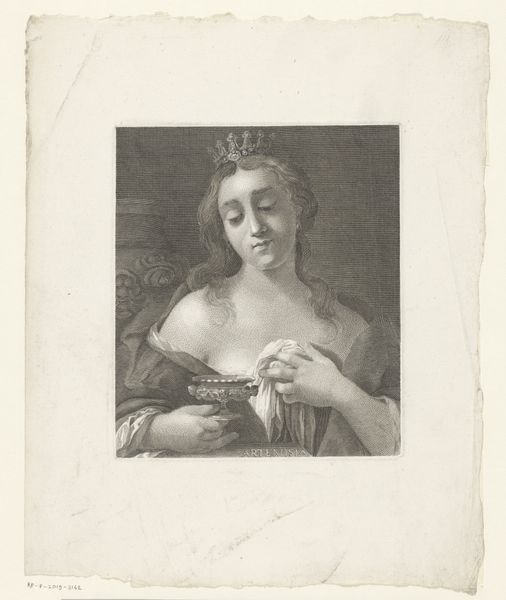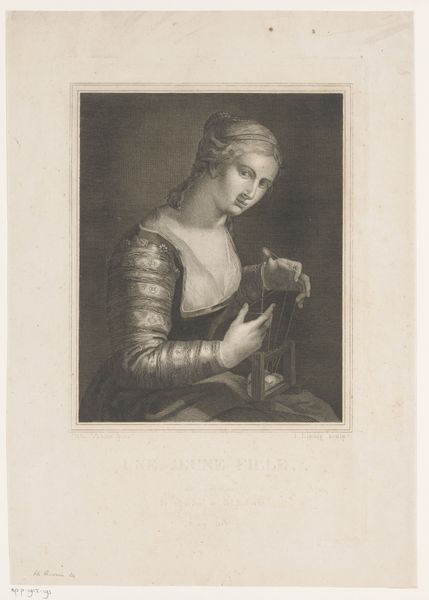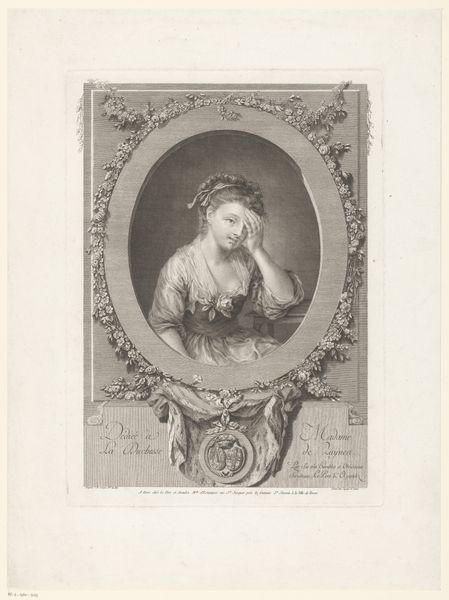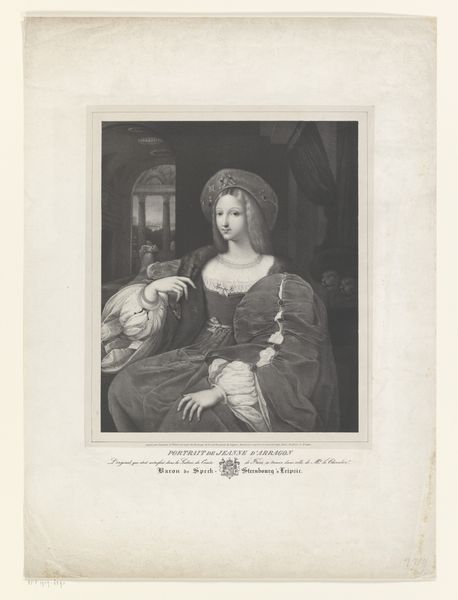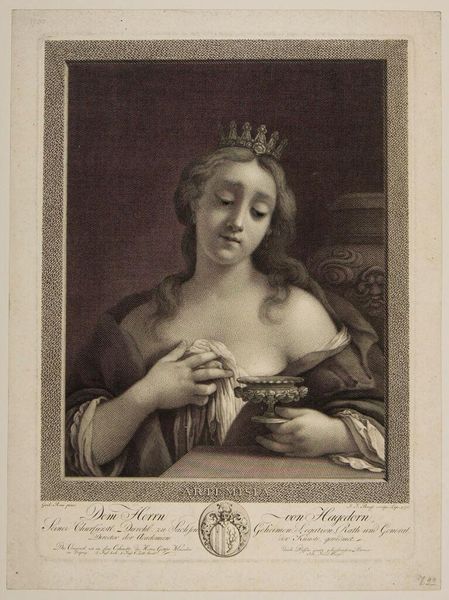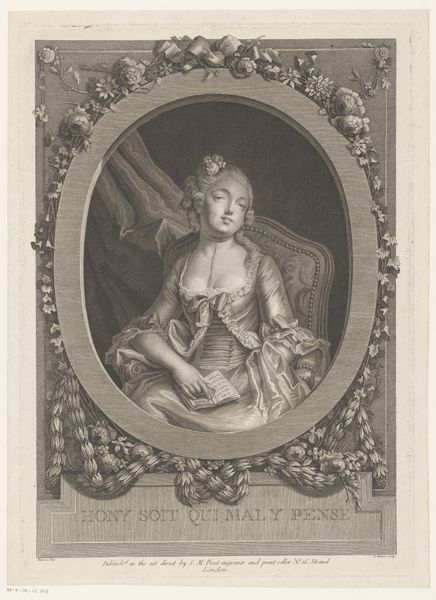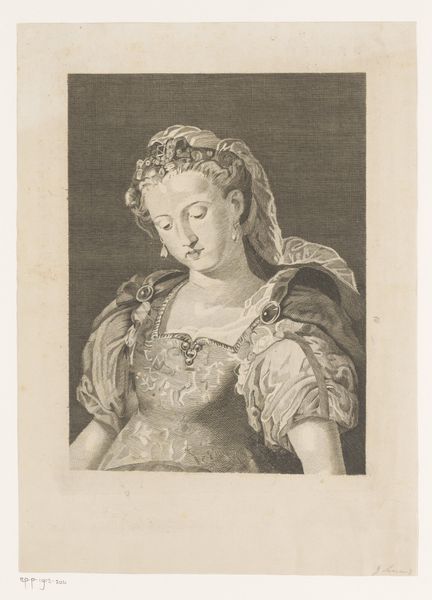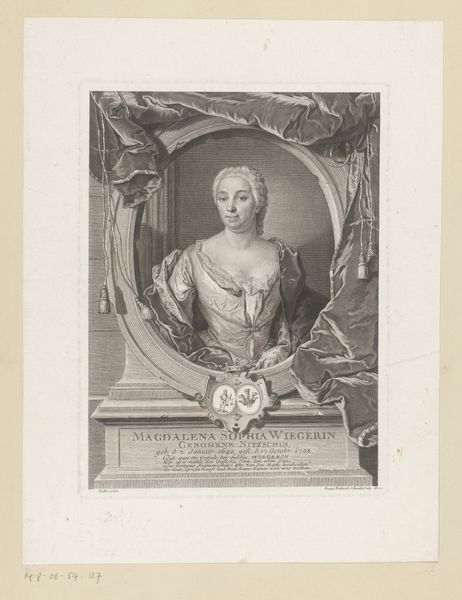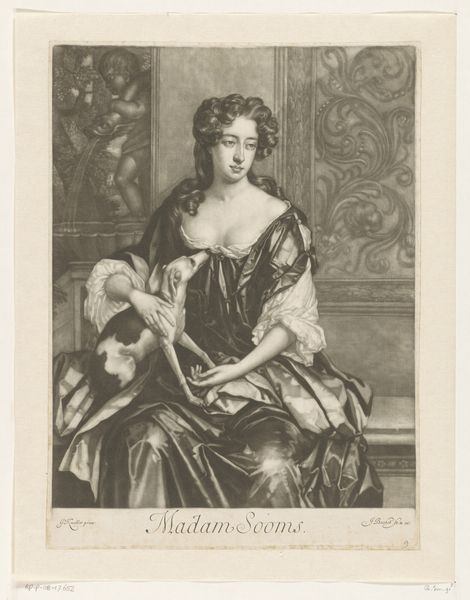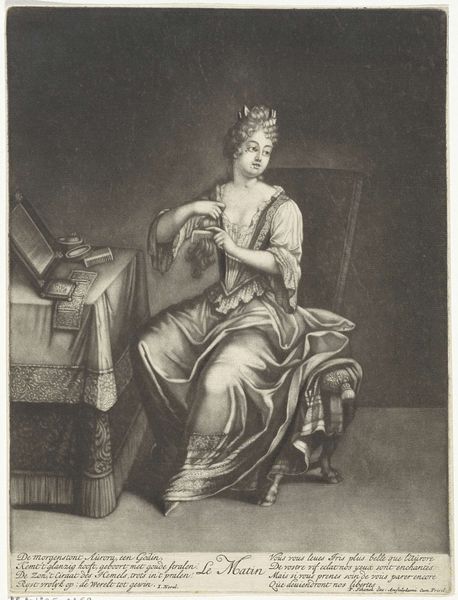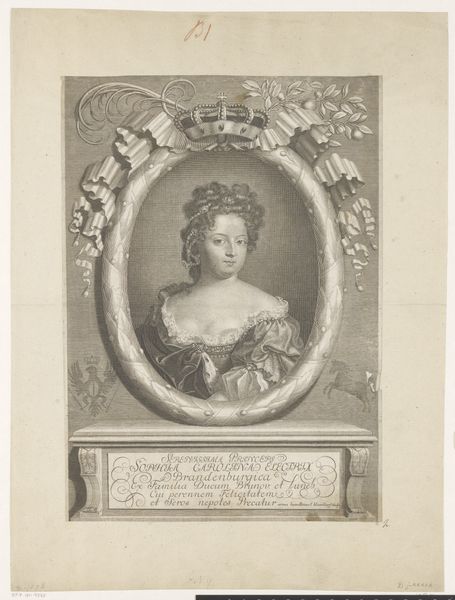
Dimensions: height 335 mm, width 240 mm
Copyright: Rijks Museum: Open Domain
Editor: This is Johann Friedrich Bause’s 1770 engraving, "Artemisia met de as van haar man Mausolus in een beker," or Artemisia with the ashes of her husband Mausolus in a cup. It has a somber and reflective feeling. What do you see in this piece? Curator: Immediately, I see a convergence of symbols, each weighted with meaning that stretches across history. Artemisia herself, the queen, but also the grieving widow. That chalice she holds—it's not just a vessel, it's a potent image of mourning, carrying not wine, but the essence of a lost partner. And look at her crown; even in grief, she’s every bit the queen, duty-bound. Editor: So the cup becomes almost a symbolic portrait? Curator: Exactly. Think of the visual weight we assign to objects. What is grief, if not a holding onto something lost? Consider the etymology of "relic". Doesn't it come from "relinquere", to leave behind? Artemisia literally "retains" her beloved in a relic; it becomes an embodiment of memory itself. What do you make of her averted gaze? Editor: Perhaps a deep introspection. Curator: Perhaps, but maybe also resistance. The Baroque loved drama and clarity. An averted gaze can be a visual clue into a struggle to reconcile her duties with personal agony, wouldn't you agree? It all comes back to how an artist infuses common symbols with added, contextual meaning. Editor: That gives me a new way to look at how art carries stories within symbols.
Comments
No comments
Be the first to comment and join the conversation on the ultimate creative platform.
